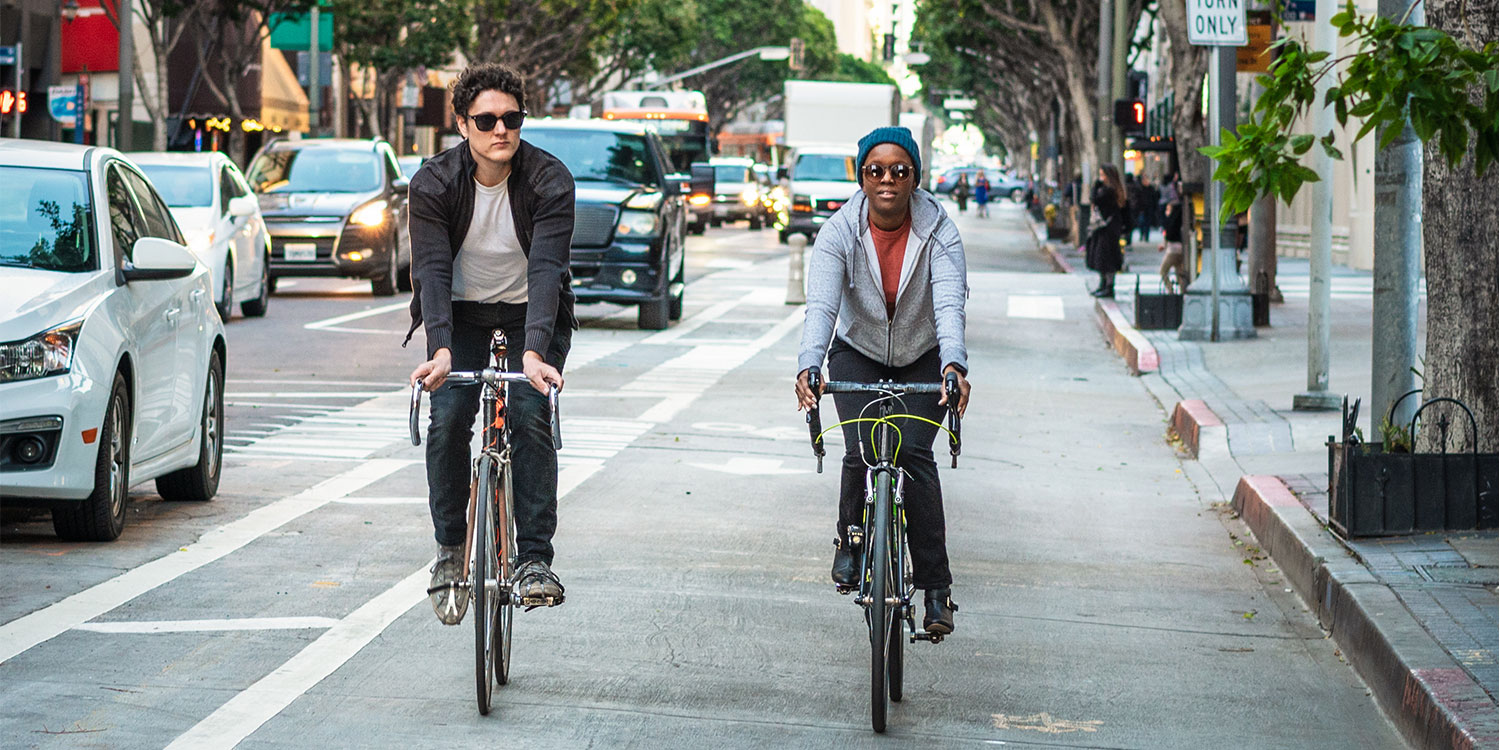Researchers: V. Kelly Turner, Ariane Middel, and Jennifer K. Vanos
Shade is an essential solution for hotter cities. The researchers provide specific recommendations for municipal decision-makers to reduce shade deserts which are most experienced by those in low-income communities, exacerbating heat-health disparities.
Researchers: Kelly Turner, Ariane Middel, Morgan Rogers, Ruth Engel, Florian A. Schneider, and Zachary Van Tol
Funded by: Community Partners through the Strategic Growth Council Transformative Climate Communities evaluation funding
This study examines how urban design influences the human experience of heat in Pacoima, a neighborhood in the San Fernando Valley region of Los Angeles. Researchers find the primary factor in reducing heat burden is availability of shade.
Researchers: Kelly Turner, Ruth Engel, and Adam Millard-Ball
Researchers find that the contributions of roads to land surface temperature are not large enough to offset conditions in the areas surrounding them. They also find that trees are the largest contributor to lowering land surface temperature, more so than impervious surface reflectivity.
This study collected the first field measurements of Mean Radiant Temperature (MRT, a proxy for human thermal comfort), air and surface temperature, and incoming long wave and outgoing shortwave radiation.
Internationally renowned artist Eric Skotnes, from the art collective INDECLINE, painted the first large-scale, street art piece using solar reflective paint to raise awareness about rising temperatures in cities. The project on a 27 x 72 foot brick wall on a 1920s-era building in South Los Angeles makes a double visual impact – as an elegant eco-mural that enlivens the community and also as an infrared image documented by thermal camera. This project is a collaboration with art historian Lizy Dastin, with primary funding from LCI, paint donated by Creative Paving Solutions, wall donated by Amped Kitchens, additional funding from the Mural Conservancy of Los Angeles, and thermal imagery by Ariane Middel.
Transit users in cities across the globe commonly spend 15 to 45 minutes or more waiting near transit stops each day, often at locations with high levels of pollution from traffic. Exposure to traffic-related pollutants increases incidence of many adverse health outcomes, as documented by a large body of research. Far less studied has been how transit users are exposed to pollution and whether or how street design could minimize exposure.
LCI Scholars Suzanne Paulson, J.R. DeShazo, and other collaborators investigated the characteristics of concentration profiles of ultrafine particles (UFP) across intersections, to determine the best place to site transit stops to minimize exposures. Findings included that UFP profiles were strongly influenced by high emissions from vehicle stops and accelerations, and that emission levels peaked within 30 meters of intersection centers and then decreased sharply. Simple time-duration exposure calculations combined with breathing rates suggest that moving a bus stop from 20 meters up to 50 meters away from the intersection can reduce substantially transit users’ exposure levels to total UFP.
Reclaiming the Right-of-Way — winner of the American Planning Association Award of Excellence — is a toolkit that provides city staff and community members with practical guidance to support the development of small-scale parks, called parklets. Parklet programs and projects are spreading quickly across the nation, from San Francisco to New York. In addition to case studies of parklet programs across North America, the toolkit provides practical advice and supporting details at a micro level to help city planners and other officials select a project site and then design parklet projects based on the context, including surrounding land use, desired project duration, and project function and objectives.
The toolkit came on the heels of a Los Angeles City Council vote approving the construction of a series of parklets. The Rosalinde and Arthur Gilbert Foundation supported the toolkit as part of a three-phase effort. During the second phase, the UCLA team in partnership with the Downtown Los Angeles Neighborhood Council opened two active parklets in downtown in early 2013. The third phase was an evaluation of the parklets, conducted in collaboration with Parklet Studies.
Alleys are largely underutilized and understudied. Cities across the U.S. are realizing the potential for alleys to operate as more than single-function spaces for vehicle use. As such, cities are increasingly transforming alleyways into multipurpose community assets. This report provides practical information for city staff, community members, and other stakeholders interested in supporting green alley efforts. Green alleys take many different forms — ranging from one-day community events to permanent pedestrian corridors. Infrastructure elements common to most green alleys include permeable paving, vegetation, and other stormwater management techniques.
The report introduces a green alley framework and provides examples of completed alley transformations from across the U.S. Then it provides a more in-depth case study of the current Avalon Green Alley Network Demonstration Project in park-poor South Los Angeles. The report provides ideas and lessons for green alley design, funding, partnership development, community engagement, and the navigation of a complex regulatory environment. The challenges and solutions presented in this document can be transferable to communities nationwide.
The Model Design Manual for Living Streets — honored by the American Planning Association — is a collaborative effort by national experts in living streets concepts. The book was funded by LCI and the Department of Health and Human Services through the Los Angeles County Department of Public Health. The manual focuses on all users and seeks to achieve balanced street design that can accommodate cars while ensuring that pedestrians, cyclists, and transit users can travel safely and comfortably. It also incorporates features to make streets lively, beautiful, economically vibrant, and environmentally sustainable.
This model manual offers a template for local municipalities and jurisdictions, especially those with limited resources, and provides the ability to tailor manuals to meet specific needs. It includes recommendations for how to maximize benefits and minimize costs associated with street design.
Vibrant streets, innovative parking policies, and desirable neighborhoods resulting from living streets can increase revenues for cities. Research shows that cities often experience increased economic development after adopting elements of living streets.

